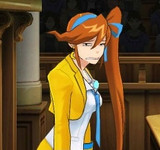Don’t be afraid to make things hard on your characters. You should always come up with several different problems to choose from. Who knows; you may even throw numerous dilemmas at them at once. Think about the type of story you’re writing and the genre you want to work in: What kinds of problems do characters usually have in these stories? How can you make your story different from the rest? Serious problems and goals will be crucial in helping to drive your story forward, so you’ll want to make them good.
IDENTIFY CHARACTER MOTIVATION
People—and characters—tend to move toward pleasure and away from pain, so consider:
People—and characters—tend to move toward pleasure and away from pain, so consider:
• Are your main characters moving toward pleasure or away from pain? Or both?
• What reward awaits the hero in the end?
• What is motivating the hero to press on?
• What reward awaits the hero in the end?
• What is motivating the hero to press on?
 |
| I need motivation! |
Now we have a much deeper level at work. The hero is moving away from the pain of low self-worth and toward the pleasure of being needed and powerful, as well as toward the pleasure of earning admiration from everyone in the village. Doesn’t that give you a bit more to write about?
What if your character just wants to have the satisfaction of doing the right thing? Still, ask yourself: Why?
• Because the character’s mother told him to always do the right thing? (He wants to please his mother and be worthy of her love.)
• Because the character wants to make up for something he did wrong long ago? (He seeks forgiveness so he can leave the pain behind him.)
• Because the character wants to believe that good always prevails? (She needs to feel like order has
been restored so she can avoid the pain of uncertainty and happenstance.)
• Because the character wants to make up for something he did wrong long ago? (He seeks forgiveness so he can leave the pain behind him.)
• Because the character wants to believe that good always prevails? (She needs to feel like order has
been restored so she can avoid the pain of uncertainty and happenstance.)
 |
| Can you guess whats next? |
INSERT CLIFFHANGERS
Cliffhangers can really beef up a sagging story, and they’re great for when you find yourself without any obvious next steps. How will you keep the reader interested? It can seem so daunting.
Cliffhangers can really beef up a sagging story, and they’re great for when you find yourself without any obvious next steps. How will you keep the reader interested? It can seem so daunting.
The answer is to come up with an event and delay paying it off. Set up the event so that the reader truly doesn’t know whether or not things will work out. There has to be a question in the reader’s mind about what will happen. Some classic cliffhangers include:
• The ticking clock (when the hero must do something in a certain amount of time and we don’t know if it’s possible to accomplish it).
• The character on the verge of making a hasty major decision (perhaps she doesn’t have all the information yet and we want her to wait, but it doesn’t look like she will).
• The interruption, either in the form of another character or an event that throws the heroine off track (the heroine is about to find her husband upstairs cheating with another woman when her neighbor stops by to talk, keeping her downstairs, and we don’t know if she’ll go upstairs and finally learn the truth; ringing phones and tea kettles usually fall into this category, and for this reason should be avoided).
• The unexpected problem just when the resolution seems on the horizon (the hero and heroine seem likely to get together, which would mean “the end,” when all of a sudden numerous problems are dropped into their laps, and we now question if it will ever work out).
• The character on the verge of making a hasty major decision (perhaps she doesn’t have all the information yet and we want her to wait, but it doesn’t look like she will).
• The interruption, either in the form of another character or an event that throws the heroine off track (the heroine is about to find her husband upstairs cheating with another woman when her neighbor stops by to talk, keeping her downstairs, and we don’t know if she’ll go upstairs and finally learn the truth; ringing phones and tea kettles usually fall into this category, and for this reason should be avoided).
• The unexpected problem just when the resolution seems on the horizon (the hero and heroine seem likely to get together, which would mean “the end,” when all of a sudden numerous problems are dropped into their laps, and we now question if it will ever work out).
The goal here is to leave the reader wondering about what could possibly happen next, so that she won’t be able to put the book down. You have to be careful that you make this seem seamless, though. It has to feel natural and organic to the plot; otherwise, the reader will get upset with you and feel manipulated. (Hey, if it were easy, every book would be a page-turner!) You are creating anticipation in the reader. This anticipation has to be paid off at some point.
So when and how do you cut back to the cliffhanger? That’s another choice you have to make on your own. You don’t want to wait too long, or it will seem as if the entire plot has come to a screeching halt. If you go back too quickly, you will lose your opportunity to keep the reader hooked. This is why writing is an art form. You have to feel the story, feel the pacing, understand the genre and make these decisions.
You can watch a dramatic TV show to see how they use cliffhangers before commercial breaks or watch some movie trailers to see how they try to entice you into the theater.
INTENSIFY THE MAIN PROBLEM
Starting your story with a compelling problem is only the first step. You’ve got to keep upping the ante, intensifying the conflict as the problem continues to grow and grow. You do this by weaving in believable and nuanced barriers, complications and situations.
Starting your story with a compelling problem is only the first step. You’ve got to keep upping the ante, intensifying the conflict as the problem continues to grow and grow. You do this by weaving in believable and nuanced barriers, complications and situations.
 |
| This is bad! |
• Complications are action points that don’t pay off immediately. The hero is busy with the main plot line and all of a sudden a new element, character or conflict drops into the mix.
• Situations simply are using one of the dramatic predicaments to move the story forward and add tension.
Pull out any outlines and plot worksheets, and review your story problem’s charted course. Now, deepen the well by adding in a mixture of the three different types of conflict just described. Push yourself and see what happens.
Don’t feel too bad about making life harder for your characters. Sometimes we just love our characters too darn much! Other times we identify with them too deeply. This is what makes conflict such a chore. You don’t want your heroine to face having her son hit by a car; you just can’t bring yourself to write it, but you know in your gut that it has to be done. You know the story calls for it, or something like it. Remember: You are doing your entire story—and your character—an injustice if you don’t write it.
Logline: $5.00 Flat Fee
A synopsis or summery is required. It well be used to form the logline. The logline is just one line.
Screenplays
Logline Service
I have been getting a lot of request for loglines. I give different prices . Since I have so many requests for this service, I decided to set a single fix price.Logline: $5.00 Flat Fee
A synopsis or summery is required. It well be used to form the logline. The logline is just one line.
Screenplays
Critique: $50.00 Flat Fee,
Includes evaluating the basis elements of a script
- Introduction
- Development
- Climax
- Conclusion
- Character development
- Mid point development
Critiques also provide suggestions for improvements and enhancement.
Payments are made by Paypal or cashier check by mail.
Other services are at regular price.
Other services are at regular price.
Query Letters: $25.00 Flat Fee
Editing: $45.00 Flat Fee
- Evaluating formatting to industry standards
- Spelling, grammar, punctuation, sentence structure, etc.
Turnaround time:
Editing: 2 weeks
Critique: 2 weeks
Query Letters: 2 weeks
Feel free to contact me at ahicks4298@msn.com.
Feel to call me at (360) 696-4298. Ask for Frances.
I also critique and edit books. I am currently organizing the service prices for working on books. If you are interested in me critiquing or editing a novel you have written, feel free contact me.
*
*
Film script format, writing film scripts, screenwriting services, coverage service, screenplay formatting margins, screenplay writing, screenplay format example, Search terms: screenplays, screenwriting service, edit and critique service, writing screenplays, screenplay format, loglines, query letter, film scripts, movie scripts, screenplay format, screenplay synopsis, script synopsis, treatment, proofreading service for writers, novels, writing services, fiction writing, film script format, writing flim scripts, screenwriting service, coverage service, screenplay critique service, screenplay format margins, screenplay writing, screenplay format example, free writing tutorials, script consultant, screenwriting jobs, film production companies
